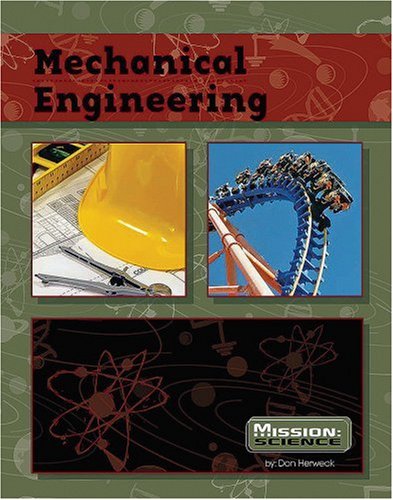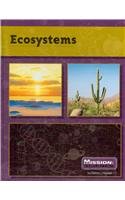-
Building a Home in Space
James Bow
Paperback (Crabtree Pub Co, March 5, 2019)"This book takes a look at what a space home might look like and what it would take to live on Mars--the Red Planet (or any other place in space, for that matter). From the Mars ice home of the future to a make-your-own project, this book will enthrall and inspire readers and future engineers." P
P
-
Mechanical Engineering
Don Herweck
Library Binding (Compass Point Books, Sept. 1, 2008)Engineers use math and science to design, build, and help things that move. They utilize specific laws of physics and motion that apply to every object on the planet. These laws cover things like force and motion, density and pressure, and dimensions and measurements. For more information on engineers, read Robert Fulton: Engineer of the Steamboat, another book in the Mission: Science series. Y
Y
-
Understanding Our Sun
James Bow
Paperback (Crabtree Pub Co, March 5, 2019)"Our star is a dynamo of energy that we cannot live without. Readers will enjoy the detailed information about the Sun's makeup and life phases. Special sidebars will draw young enthuiasts into making real-life decisions about harnessing the Sun's power for our use now and for the future"-- R
R
-
Chasing Comets, Asteroids, and Mysterious Space Objects
Nancy Dickmann
Library Binding (Crabtree Pub Co, March 5, 2019)Oumuamua is a space rock that formed around another star. Of the 10,000 space objects that have hurled past our Sun, this rock provides some proof that there are planets similar to Earth outside our solar system. This intriguing book reveals to young space explorers the secrets contained in the rocks that fly around in space. T
T
-
Understanding Our Sun
James Bow
Library Binding (Crabtree Pub Co, March 5, 2019)"Our star is a dynamo of energy that we cannot live without. Readers will enjoy the detailed information about the Sun's makeup and life phases. Special sidebars will draw young enthuiasts into making real-life decisions about harnessing the Sun's power for our use now and for the future"-- S
S
-
Journeys to Outer Space
Megan Kopp
Paperback (Crabtree Pub Co, March 5, 2019)"How soon can you board a rocketship to Mars? And how will you survive when you get there? There are so many challenges to overcome in sending a human into space, such as problems of distance, fuel, and propulsion. This compelling book describes the history and future of space travel and the exciting areas of research travel presents."-- O
O
-
Unlocking the Secrets of the Solar System
Megan Kopp
Paperback (Crabtree Pub Co, March 5, 2019)"How was the solar system created? Why are the Sun and Moon the same size in the sky? These are just some of the questions answered in this exciting book about our seemingly endless solar system. Readers will love the problem-solving focus that makes space exploration an adventure in innovation."-- T
T
-
Ecosystems
Debra J. Housel
Library Binding (Compass Point Books, Jan. 1, 2009)Housel, Debra J. U
U
-
Chasing Comets, Asteroids, and Mysterious Space Objects
Nancy Dickmann
Paperback (Crabtree Pub Co, March 5, 2019)"Oumuamua is a space rock that formed around another star. Of the 10,000 space objects that have hurled past our Sun, this rock provides some proof that there are planets similar to Earth outside our solar system. This intriguing book reveals to young space explorers the secrets contained in the rocks that fly around in space."-- T
T
-
Space Exploration
Connie Jankowski
Library Binding (Compass Point Books, Sept. 1, 2008)Jankowski, Connie T
T
-
The World of Plants
Michael L Macceca, Robin S. Doak
Library Binding (Compass Point Books, Jan. 1, 2010)Plants are amazing food factories. They make their own food from sunlight, water, air, and soil. They also provide food―nuts, berries, leaves, roots, stalks, and other plant parts―that humans and other animals eat. Plants create material for our clothes, houses, and furniture, and even the oxygen we need to breathe. For information on plants, read George Washington Carver, another book in the Mission: Science series. U
U
-
Elements
Lynn Van Gorp
Library Binding (Compass Point Books, Sept. 1, 2008)Everything in the universe is made of matter. Matter is made of tiny objects called atoms. There are many types of atoms. When atoms of the same type combine, the result is an element. Some elements, like silver and oxygen, are found in nature. Others are man-made. When combined, elements can form new substances. For more information on elements, read Antoine Lavoisier: Founder of Modern Chemistry, another book in the Mission: Science series. X
X